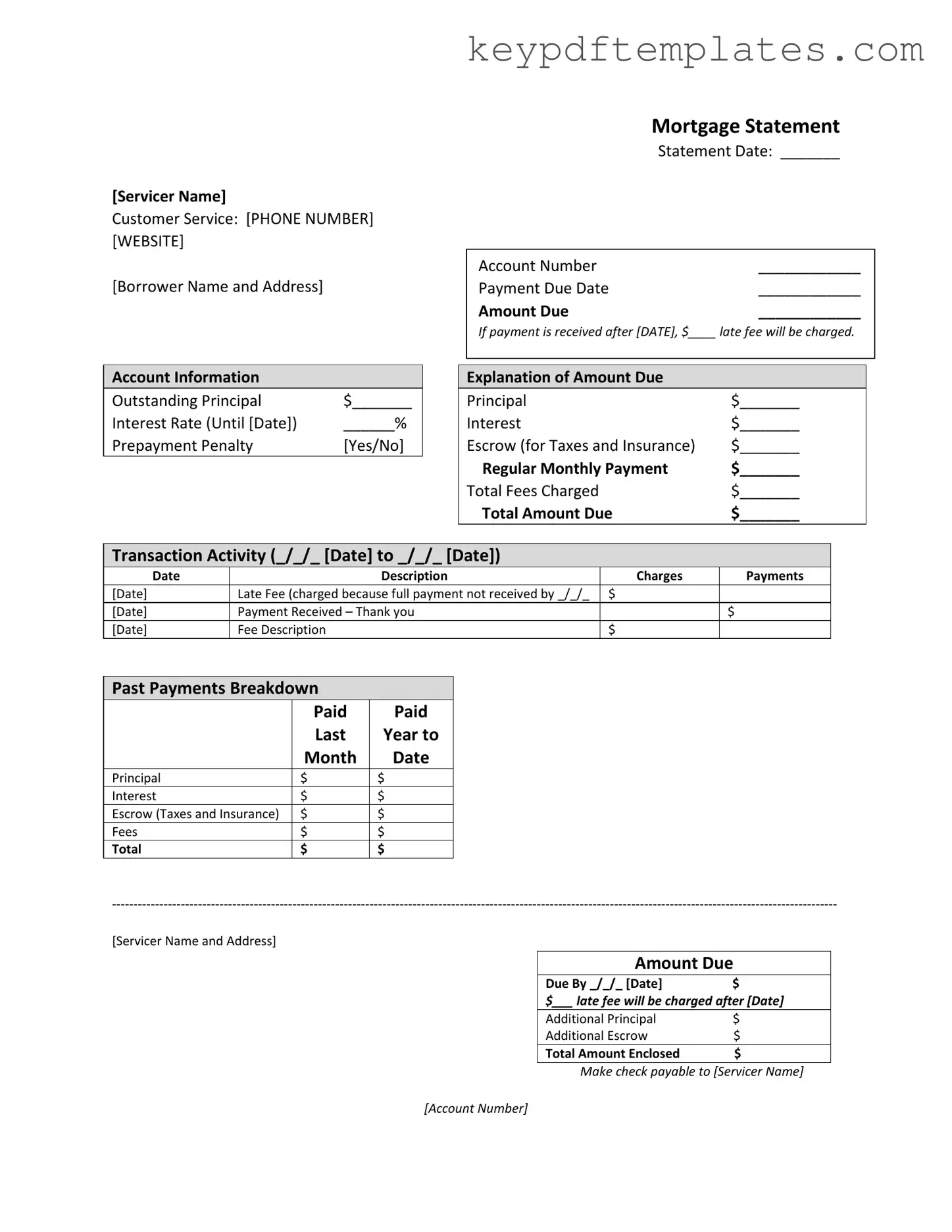Understanding mortgage statements is crucial for homeowners. However, many misconceptions can lead to confusion and mismanagement of finances. Below are eight common misconceptions about the mortgage statement form, along with clarifications to help homeowners navigate their mortgage obligations effectively.
- Misconception 1: The mortgage statement is just a bill.
Many believe that the mortgage statement is merely a request for payment. In reality, it provides a comprehensive overview of the loan status, including principal balance, interest rates, and any fees incurred.
- Misconception 2: Late fees are automatically applied.
Some homeowners think that late fees are charged immediately after the payment due date. However, a grace period is often provided, and fees are only applied if payment is not received by a specified date.
- Misconception 3: Partial payments are applied to the mortgage balance.
This is a common misunderstanding. In fact, partial payments are held in a suspense account and do not reduce the mortgage balance until the full payment is made.
- Misconception 4: The interest rate is fixed for the entire loan term.
Homeowners may assume their interest rate remains constant. However, many loans have adjustable rates that can change over time, affecting monthly payments.
- Misconception 5: Escrow payments are optional.
Some believe that escrow payments for taxes and insurance can be skipped. In most cases, lenders require these payments to ensure that property taxes and insurance are paid on time.
- Misconception 6: The total amount due includes only the monthly payment.
Homeowners might think that the total amount due is solely the monthly payment. However, it also includes any outstanding fees, late charges, and escrow contributions.
- Misconception 7: Payment history is irrelevant.
Some borrowers overlook the importance of their payment history. The mortgage statement often includes this information, which can impact credit scores and future borrowing ability.
- Misconception 8: If I am experiencing financial difficulty, I should wait to reach out.
Many individuals feel embarrassed or reluctant to ask for help. However, it is crucial to contact the lender as soon as financial difficulties arise. Most lenders offer resources and counseling to assist homeowners in distress.
By addressing these misconceptions, homeowners can gain a clearer understanding of their mortgage statements and make informed decisions regarding their financial obligations.
